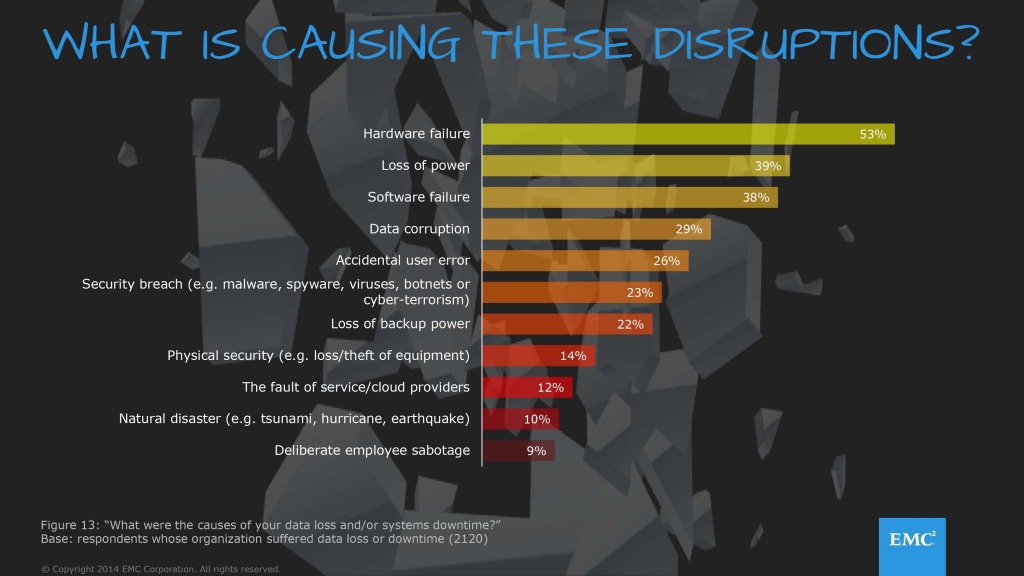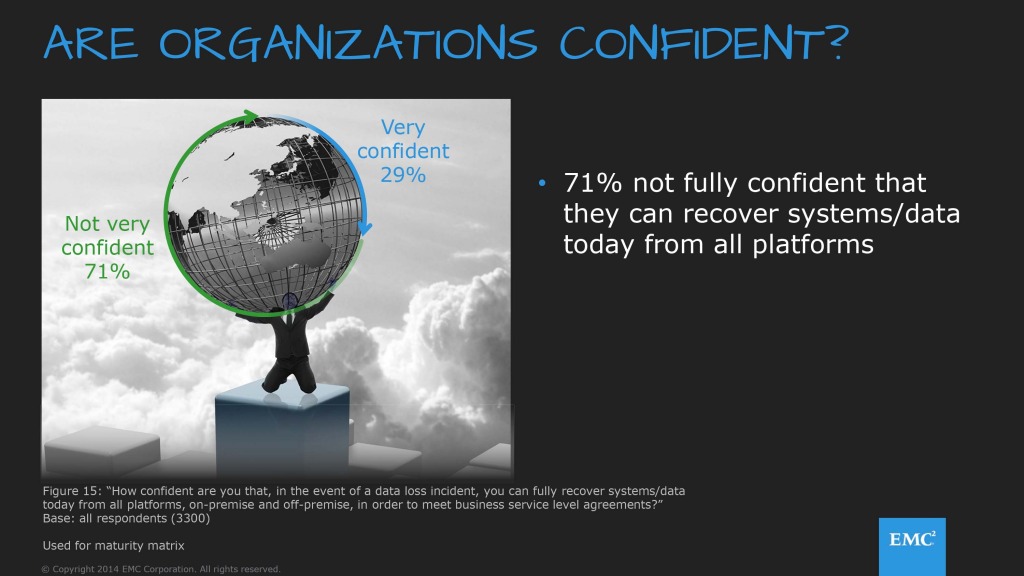According to the EMC Global Data Protection Index, which surveyed 3,300 IT decision makers from mid-size to enterprise-class businesses across 24 countries, common data protection practices have left global businesses exposed to data loss and downtime to the tune of $1.7 trillion annually. For the sake of comparison, that’s about the same as the world’s total military spend in a single year. A startling statistic by any account!
And this is only a glimpse of what’s to come if attitudes and practices toward data protection are left unchanged.
As the world marches to the cloud and business markets become increasingly connected, ensuring that data is protected, always on, and always available becomes absolutely critical. In fact, I’d go so far as to say the business trends underpinning the 3rd Platform – specifically social media, big data, mobile and cloud – don’t just spell the end of business as usual, but also the end of data protection as we know it.
Organizations that don’t look to new strategies to ensure availability across their environments – wherever their data resides, whatever the application that generates it – won’t just cut into profits; they’ll put their businesses at significant risk.
Data loss and downtime will continue to have a detrimental impact on business profits, but the effects of the disruption will be felt much further than they are today – and will be much farther reaching than many of us could have ever imagined.
Yes, disruptions in protection will continue to limit product and service development. Yes, downtime will continue to take a bite out of revenue. And yes, incremental business opportunities, customer acquisition and repeat business will continue to be affected by the way we protect our data. But the bigger issue – the one that global enterprises of all sizes will really want to pay attention to – is how data protection will affect new business opportunities and revenue streams going forward. That’s why we’ll likely see these types of business consequences, along with a loss in market value, move to the top of the disruption list.

Similarly, what’s causing these disruptions will also shift as data moves to and between clouds, and data management becomes increasingly important.

Lastly, the index shows that businesses are adopting a new mindset about data protection… that they are trading in their multi-decade-held views of data protection as a back office activity for one that sees protection as part of boardroom discussions.
While there is little consensus among those surveyed on the technology in place to prevent disruptions and ensure availability, nearly two-thirds of the global enterprises surveyed consider data protection critical to the success of their businesses, and the numbers are even higher in China (90%), Brazil (82%) and the United States (80%). Encouraging signs all around!

However, there’s a still a significant gap between what organizations know (i.e., that data protection is critical to the future of their business) and current confidence levels. (If they’re not confident in current practices, what does this say about future plans?)
In fact, 71% of those surveyed said they were not fully confident that they could recover systems/data today from all platforms.

Now, I’m not sure what “fully confident” means, but I do know that in the business world to which we are headed, confidence along with the ability to adapt and execute to market shifts is paramount, and the only way to achieve this is to think and do things differently.
We’re ready to disrupt markets through data protection. What about you? How solid is the ground your enterprise is standing on?
* * * * *
To see more EMC Global Data Protection Index results, please visit our microsite.